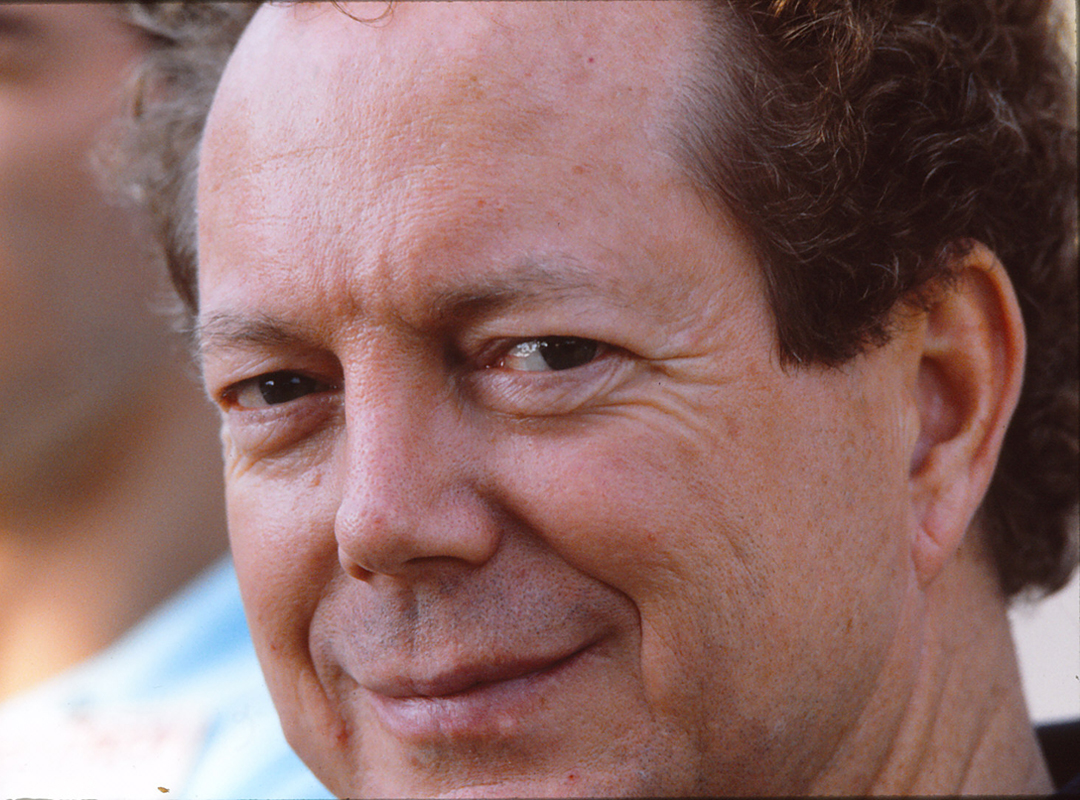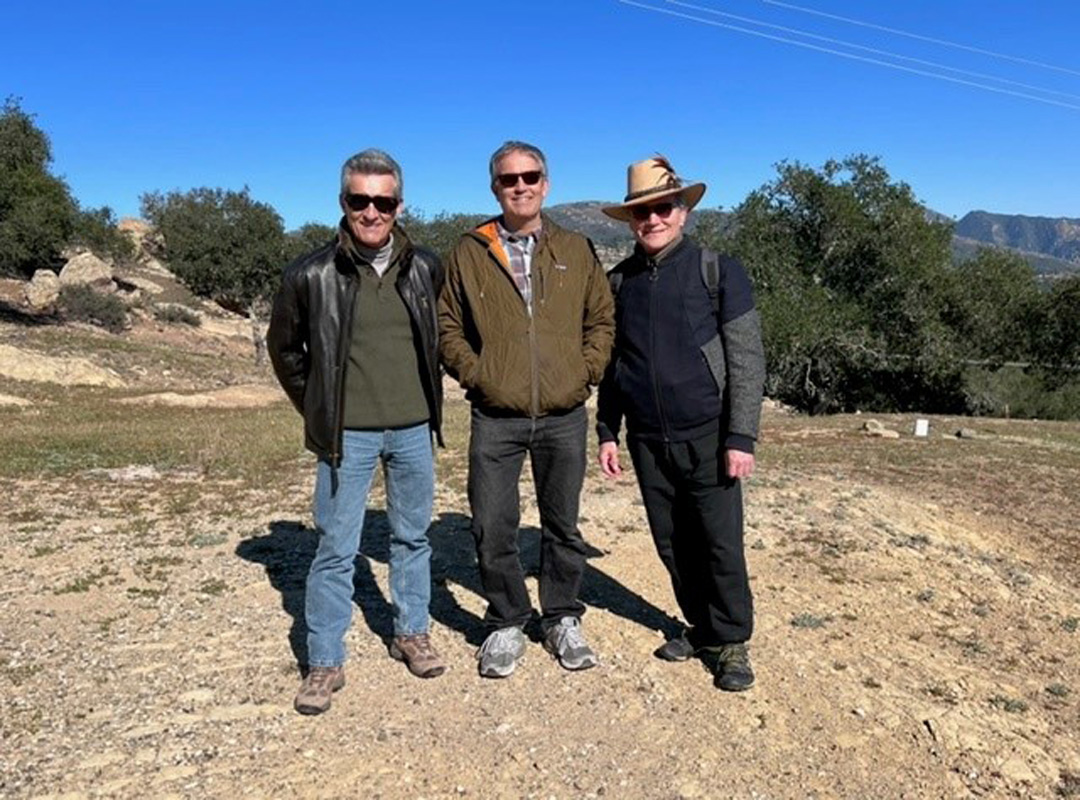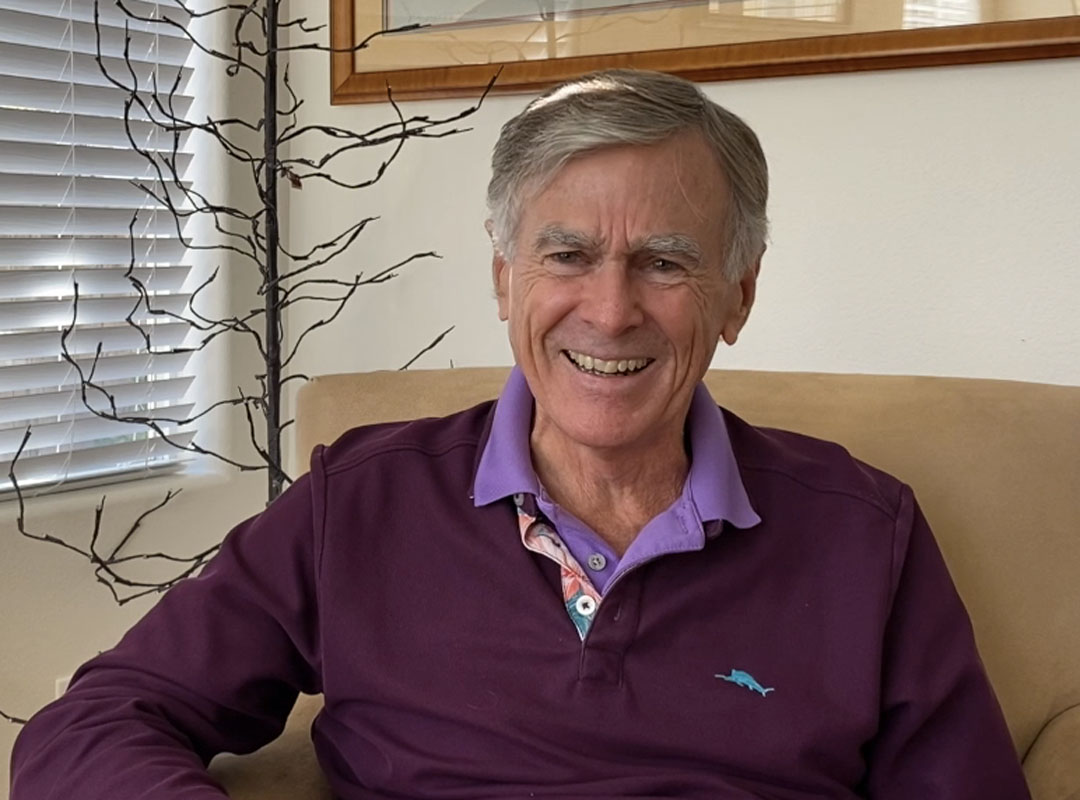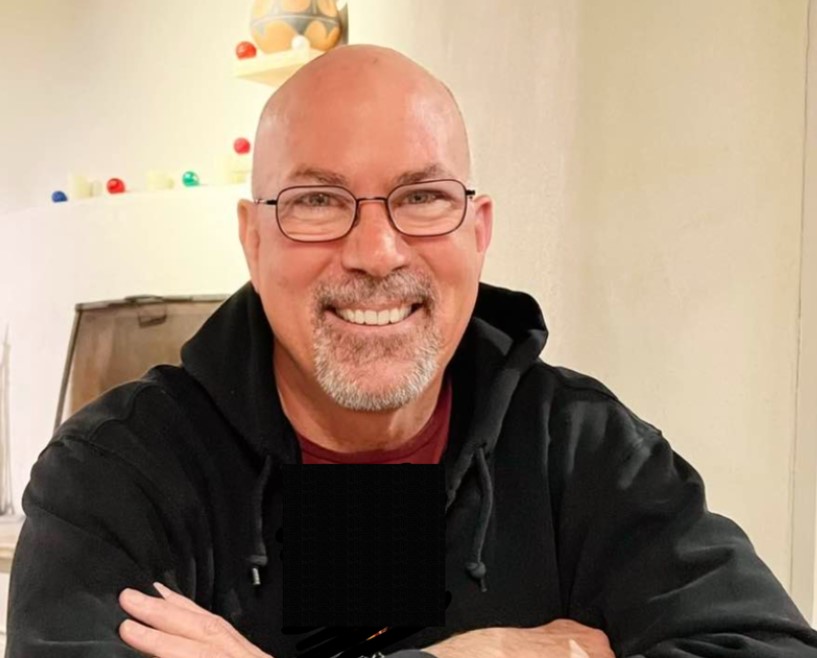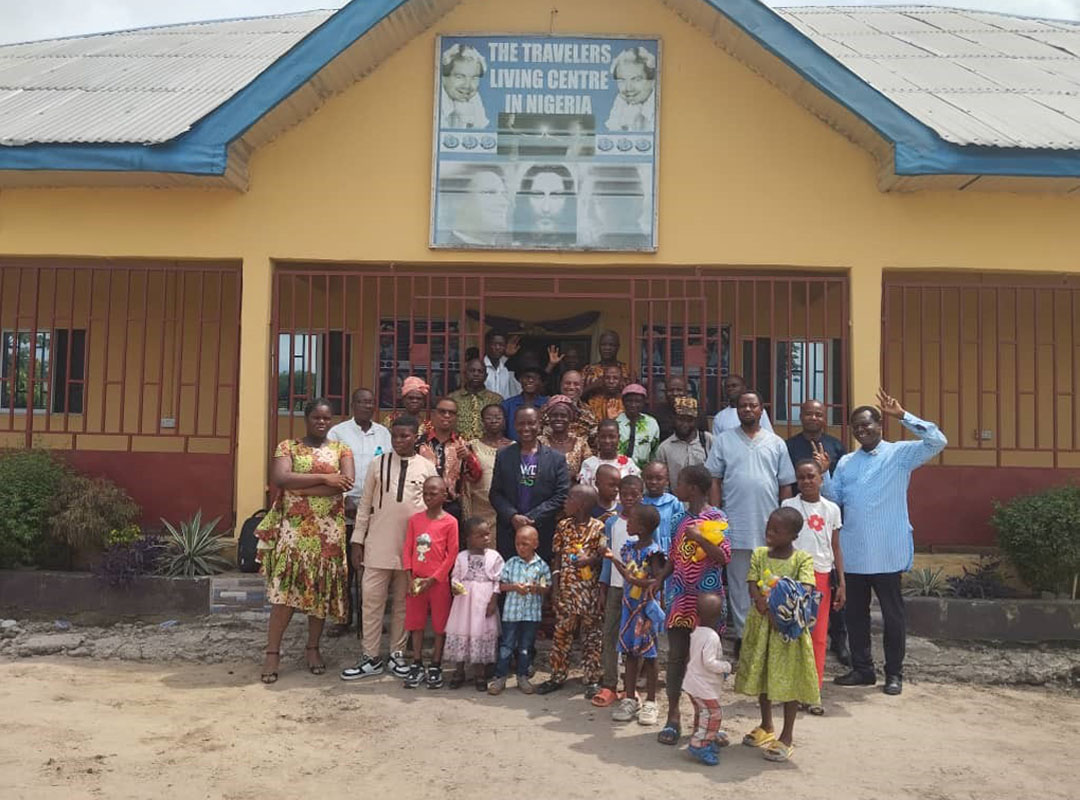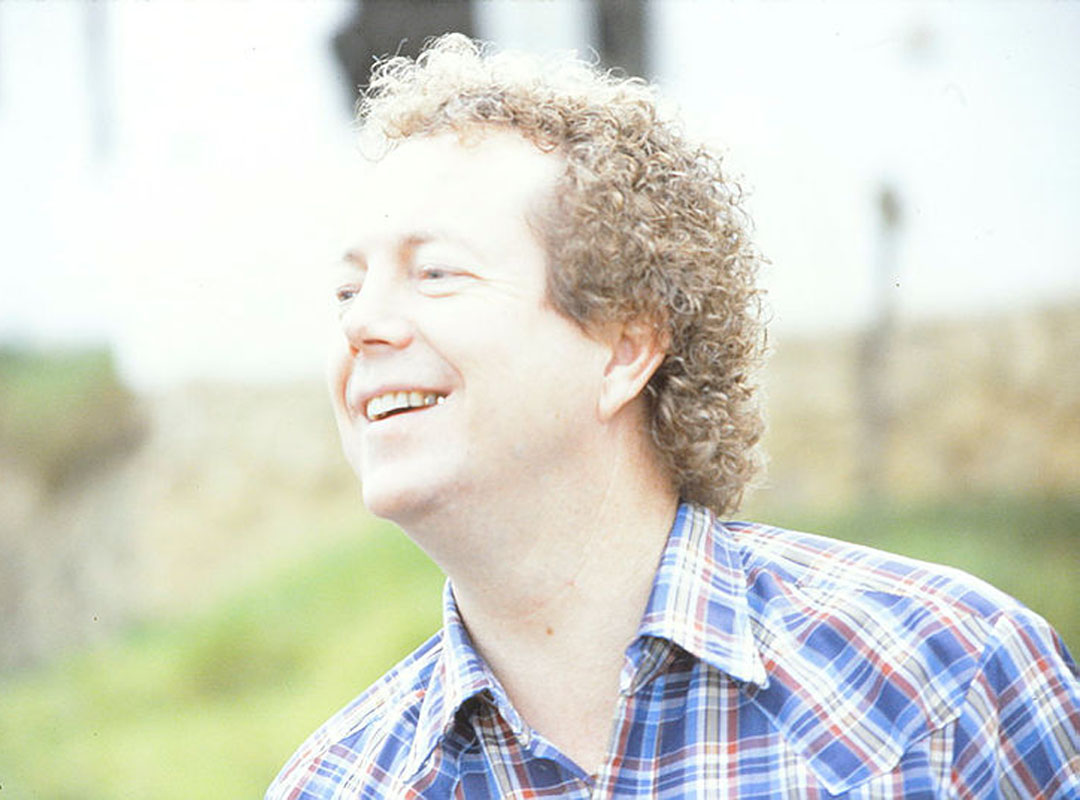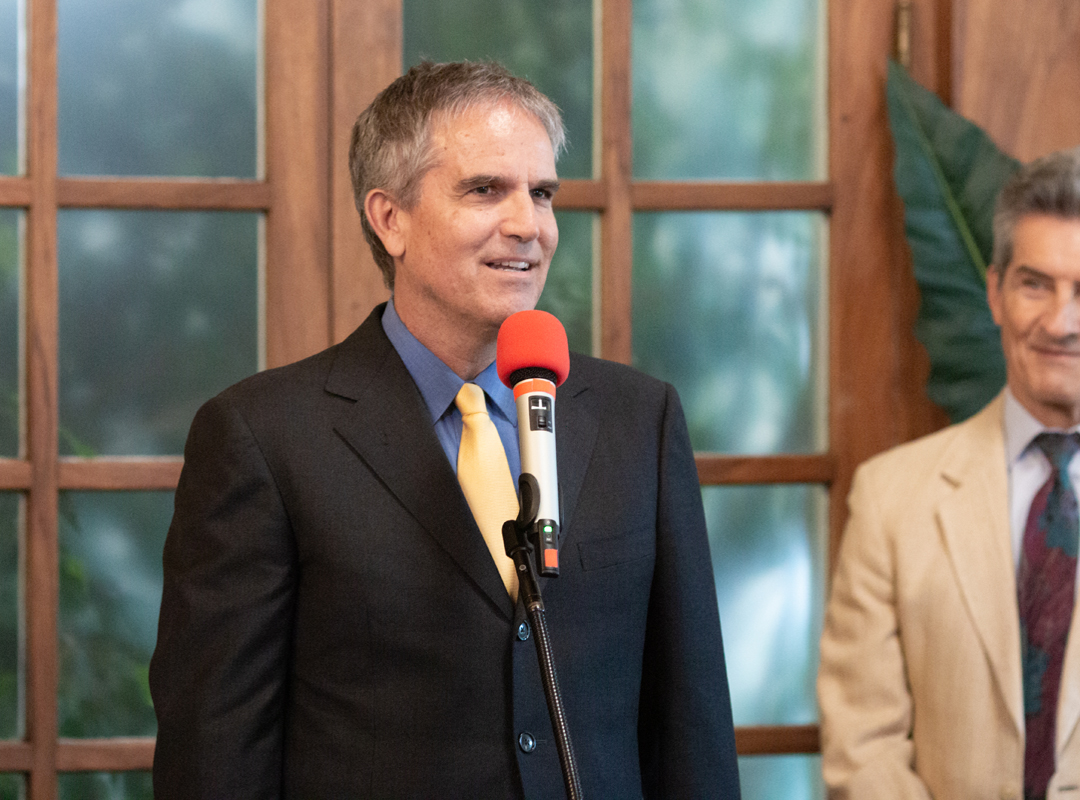In this second part of a two-part discussion focusing on education, John-Roger, Russell Bishop, and Jack Canfield talk more in depth about student-teacher relationships. Their experiences in the classroom and in working with people offer keys to greater communication and openness among students of all ages, some of whom play the role of teacher. They all agree that to demonstrate the freedom that spurs students on to pursue greater joy and fulfillment in their lives is the most valuable gift a teacher can share.
Originally published in Movement Newspaper April 1981 Vol 6 Issue 4
JACK CANFIELD: Being a successful teacher, to me, is a lot of just being willing to be in a relationship with the students. I have a friend who works with autistic children. He took this one autistic kid out to the basketball court, where he’d play basketball with other kids who were more active and responsive. At regular intervals, as he played, he’d Just lay the ball into this autistic kid’s stomach. And the kid would just sit there and let it bounce off his stomach. He did this for three weeks. At the end of the third week, he started to throw one at the kid’s stomach, and the kid put his hand up and knocked the ball down.
JOHN-ROGER: God, I would have sat down and cried, I think.
JC: He was willing to be in a relationship with that child and to keep working with it.
J-R: We’ve had people in MSIA working with autistic kids. One interesting problem that has come up is that once the kid starts to move and respond, the parents don’t want that person to work with the child anymore—because their success says that the parents were a failure.
You can do one of two things at that point. You can give up and let the parents win, stand back and watch the child not learn. But what kind of form is that? Or you can do whatever it takes to get results for the child. That’s my way—whatever it takes. And with that, there are guidelines: don’t hurt the children in any way and don’t hurt yourself. Take care of yourself and take care of them. Treat yourself and your students as one.
The bad news about teaching for the Golden Age is that any time you give children attention, acceptance and approval, it’s going to be reciprocated. There is an affection that grows spontaneously and a form of intimacy that results from sharing mentally and emotionally. People who do not understand what is taking place may label it sexual seduction. I hear this from teachers over and over, and there are a whole lot of them who won’t enter into a relationship with their students because they are afraid of being misinterpreted. They block themselves and they block their students from, perhaps, one of the most rewarding and fulfilling experiences available to them, by not being willing to be a fully participating partner in a teacher-student relationship. Each teacher has to decide for himself what is most valuable.
Now, if the teacher doesn’t do any thing to create a bad reputation, the administration can’t prove they did. There may be rumors and you may have to live with a slightly fuddled-up reputation for a while until people figure out that there’s nothing going on except education. Sometimes you have to wait until your students grow up, get married, have kids of their own, and then point to you and say, “I want my kids to have him (or her) for their teacher because he’s a great teacher.” Then everybody says, “Oh, wow, that’s really true. He’s a great teacher.”
If you can’t go through the years of having a questionable reputation, then you might just have to sit there and be an instructor instead of a teacher. Do you know the difference? An instructor says, “Here’s how you swim: you kick your feet back and forth and you move your arms like a windmill over your head. Now jump in the water and do that. I won’t get in the water with you because I might get too close to you; I might touch you and somebody might misunderstand that.”
JC: I think that most people go into education initially because they want to help kids, but they lose that somewhere along the line. They might lose it because they don’t really have the skills to work with the children. It might be that no one ever taught them how to really be with kids and share with them and teach them. It’s not a skill that you’re taught in college.
I do workshops for teachers, and one of the things that I invariably do as part of the workshop is to ask teachers to tell me, if they could snap their fingers and have everyone in the world know one thing which could be a thought skill, attitude, behavior, etc., what would that one thing be? What would they have the whole world know? And then I go around and have everyone share what that would be for them. I get responses like: To trust God, to have self-confidence, to be willing to take a risk, to be humble, to love themselves, to be able to accept love, etc.
Then I ask how many of them ever took a methods class when they were in graduate school. And I get a huge show of hands-usually 100 per cent. Then I ask how many of them ever took courses like: “Wisdom From Your Strength 101” or “Learning To Be Humble 303” or “Advanced Practicum in Self-Love”? And everyone of them says, “Nope, not me.” And yet they say that those are the most important things in the world to know.
Then I ask how many of them did something on purpose with their classes, something intentional, not something that spontaneously happened, but something that would be called curricular in terms of a lesson plan, to teach “wisdom from your strength” or “how to be humble” or “how to have self-confidence” or any of the other skills they have just identified as being valuable. And I see all these sheepish looking faces, as they look within themselves and reconnect with their original intention as teachers, which was the desire to serve.
I got fired in my first year of teaching…
J-R: You don’t get fired. They don’t renew your contract.
JC: Right. It’s all very professional. They didn’t renew my contract because of the way that I supported the kids. Martin Luther King was killed in 1968 and I was teaching in an all black school in Chicago. We had what was labeled a riot by the whites and an insurrection by the blacks. The kids threw things out the windows, ran through the halls, messed up the cafeteria. The teachers all ran and hid in the teachers’ room and locked the door. It would have taken maybe three teachers to stand up and say, “stop,” just yell “STOP” really loudly in the hallway, to have stopped the kids. They were as scared as we were.
Someone had pulled the fire alarm, so we had white firemen running into the school. By this time there were probably a couple of hundred kids running through the halls with another 500 or so in the cafeteria and another 500 or so in the gym, all doing minor damage of one sort or another.
There was one kid running down the hall who bumped into one of the white firemen who was running into the school and bumped him on the arm. And this guy, who was also scared out of his mind, took his fire axe and went to swing at the kid. I happened to be behind him and I just grabbed the axe handle and stopped him from swinging. I don’t know, but I think that kid is around today because of my hand.
But to let you know how off-center the whole thing was at that school at that time—the fact that I stopped that fireman from swinging was taken as “supporting the riot, inciting the riot,” etc.
Also, at that time there were no teachers in the English department teaching creative writing because they were told, “black kids need the basics; they can’t learn creative writing.” I had a bunch of kids who were really good, college prep material, bright and creative and eager to learn.
They came to me and asked me if I’d be willing to sponsor a writing club after school. Not knowing school politics in my first year of teaching, I said, “Sure.” I worked basically with the idea of, “You write it. We’ll have someone read it and if they get what you intended for them to get, then communication occurred. If they don’t get what you intended them to get, then it’s obviously vague and you need to work on it.” Pretty simple approach. We had a good thing going. And I got called in by the administration and told that I was bad and rebellious in nature.
Some kids were putting out an underground newspaper and, because I was involved in this “writing club” after school, and the administration came down on me as instigating the underground paper.
There were two other teachers in that school who were also new teachers and who had graduated from the University of Chicago. This was in the 60’s when there was a lot of political activity on campuses, and the three of us were held responsible for the turmoil that was happening on our high school campus. We were accused of being radical, of writing the underground paper, of filling the kids’ heads with radical ideas, etc.
J-R: I think that all that was probably one of the greatest blessings of your life. It really gave you a form from which to observe objectively what goes on around you. If your first year of teaching had gone well, you might have gone on to become a real upper mediocre social studies teacher in some school. But that first year, with your involvement being what it was, and with the administration’s belief that you were going to seduce your students, if not sexually, then…
JC: …by some other form of rape.
J-R: Right. So the set of circumstances made your position really clear to you, which could be why
JC: I think one of the exciting things about Insight is that it can assist teachers in recognizing that they are creating, promoting or allowing what goes on in their classrooms. What so many teachers do is continually blame the kids.
In my school, we had this white faculty who had been teaching primarily white kids. Then the neighborhood changed within a short period of time and the school became an all black school. And the situation was totally different. So the teachers said, “it’s the kids’ fault. It’s not us. We’re good teachers. It’s the kids.” They blamed something outside themselves for the fact that it wasn’t working the way they were accustomed to it working.
J-R: I think we’re back to the ideas of participation in the teaching process and being in a relationship with your students. If you don’t enter into a relationship, then it’s pretty easy to sit back and say it’s the kids’ fault. If you enter into a relationship with the kids, then your responsibility as a teacher becomes clearer. There are all sorts of ways to get the-material over to the kids.
JC: I read in the paper the other day about a new theory that’s out for teaching, called “mastery learning.” Basically, what it is, is giving a student a test to see if he knows certain material. If he doesn’t know the material, then you develop a way to teach it to him. If he does, he just moves on to the next thing.
RB: Does the student have to know the content of the material or can he get by with just knowing the form?
J-R: All that would be doing is teaching the test, not discovering what the child knows about it.
RB: Do we want kids just to know the form or are we more interested in them knowing content?
J-R: When I was teaching literature in high school, there would be certain reading that was required of the kids. Before I would assign the reading, I would go through and pull out words that I thought the kids would not know how to spell and would not know the meanings of. Then I’d say to the class, “Get out your paper and pencils; this is a spelling and vocabulary test.” And I’d give them these words. They’d hand in their papers and nearly everything would be wrong. And we’d correct the papers.
Then I’d assign the reading that had those words in it. They’d go home and read the material, come back the next day, and I’d hear those words used in the context of the reading. Those words had meaning for the kids, in terms of their communication with one another and with me. I’d test them again on the spelling and vocabulary and it wasn’t long before most of the class was getting 100 per cent on their tests.
In a way I was teaching for the test, but in a greater way, I was teaching for content. It was a way of teaching them to think. I never was one to teach for the test unless that test had something else of value connected to it.
Sometimes tests represent opportunity; for example, pass a certain test and it represents acceptance at a good college. Pass another test and it represents opportunity in a certain career field. Those kinds of tests have opportunity connected to them-and you teach for that opportunity. Pass the test and you gain the opportunity. Some people will never pass the tests, but they’ll get the opportunities in life by the seat of their pants by their basic common sense approach to life.
But something other than the form can be communicated to the kids; I don’t know if it can be taught but it can be communicated. I remember a girl in one or my classes who was very bright and very sharp, and she would rather take a failure than stand up in front of the class and do a book report. She would rather have failed the whole class than stand up and have to talk in front of a group of people. One day I walked over to her seat, took her by the hand, pulled her up to her feet and walked with her up to the front of the class, to the podium. I stood there beside her and put my arm around her and said “Now, what book have you read recently?” She told me. I said, “Who wrote that ?” She told me who wrote it. I said, “Why did that person write that kind of book?” She said, “Well, I think he wrote it so he could let people know…”
And we stood in front of the class and talked about the book she had read. She had a lot of information about it and a lot of very sharp perceptions about the book, the author, the message, etc. When we were through talking, I asked the class how many thought she should get a “C” for her book report. No one raised their hands. I then asked how many thought she should get a “B”. No one raised their hands. “How many think she should get an ‘A’?” I asked. All the hands went up. She got her “A. She said, “That wasn’t a book report!” I said “Well what was it? In this class a book report is a report that gives information on a book and gives your thoughts about that. And that’s what you did.” The next time her book report was due, she got up and walked up in front of the class, opened up her notebook and started to read. I stopped her and told her that I didn’t want to hear her read something she had written. I just wanted her to tell us about the book. She said she couldn’t do that because she got really flustered and embarrassed.
I said “And when you get flustered and embarrassed, you turn red and probably get real hot, and it’s embarrassing to you because it’s obvious and all the kids know you’re embarrassed and having a hard time.” She said, “Yeah.”
1 asked the class if there was anyone who didn’t know that her throat and face were red and that she was having a hard time talking to the class. Nobody raised their hands. I said, “Well, since every one knows that, you might just as well go ahead with your report.” So she did. And that beautiful lady is now one of our Insight facilitators.
She probably has long ago forgotten all about whatever book she read and the form of those first book reports. But what she learned is that she can handle herself, her emotions and all her considerations both within herself and in front of a group of people. That, to me, is teaching.
JC: One thing that’s just really exciting about that to me, is that you were allowing the kids to be exposed to you as a human being who is alive and loving and willing to cooperate with them as they were. They didn’t have to do it your way. You could adapt, and together you could all discover a way that would work. You gave them a model of being.
J-R: I had another kid who was terrified of speaking in front of his own class, but would come into my room during a period when he had study hail or when I had another class. He’d stand up by my desk and talk to me, while all the rest of the class eavesdropped intently on what was being said.
One day when he came in, I got him talking about the book he’d recently read. He stood there and told me all about it while all the class listened. It wasn’t “his” class so he wasn’t disturbed by the obvious fact that they were listening. When he got all through, I gave him a grade for his book report. He was amazed and thought I was the neatest teacher he’d ever known. He had fulfilled the terms of a book report, and I didn’t see any reason that he had to do it in front of the class he was in, or why he couldn’t I do it in front of another class with I the same results.
JC: To me that’s providing a model of being for the kids … and not only of being, but also a model of thought that is uplifting and inspiring and gives them a greater perspective on how life can be for them. It opens up all sorts of new horizons and new possibilities.
There’s an inherent value structure within that, too, that’s communicated to the kids. You let them know that they were more important to you than the form, that they had value and that you were willing to go out of your way to assist them to express and experience that value.
J-R: You talk about models of being. There are negative models of being, too, aren’t there?
JC: Sure. There are models of negative behavior.
J-R: The movie, Scared Straight, has negative role models, yet the movie may have had a positive result. And it may have had negative results, too. You don’t know how many people that movie is keeping out of jails. And you don’t know that because they’re not going to jail. They’re not showing up anywhere on any kind of statistic. And there are probably some kids showing up in jails who have seen that movie and reacted to it in a negative way—saw the convicts as role models to follow rather than as role models not to follow.
JC: Everyone gets a lot of models in their lives. The real issue may be how you learn from them. Do you use a negative role model as how not to be or how to be? How do you view exposure to those models?
J-R: There are a couple of theories in educational psychology. One goes that you see the bear, get frightened and run. The other goes that you see the bear, run and then get frightened. Which one is it?
JC: I would say that you see the bear, get frightened and run.
J-R: Why?
JC: Most people see something, create a negative event in their mind, and then react to that mental image, rather than to what is really present.
J-R: Have you ever been walking in the dark, had somebody scare you, and then jump without thinking about it?
JC: Yes.
J-R: Where did you find the time to create the image, or the fear, which caused you to jump?
JC : Maybe I didn’t.
J-R: Then did you jump and then got scared?
JC: 1 don’t know. Maybe it’s simultaneous. Or maybe you can jump and then get scared.
J-R: Do you get the idea of where these concepts start to fall apart? I’ve now destroyed both of them in terms of any viability. Let’s look at them in terms of the dynamics involved in the experience. If you see a threatening situation, get frightened and run, that may be appropriate behavior for you at that moment. If you see something, run, and get frightened, you are creating or perpetrating a habit pattern which may or may not serve you well. It might be appropriate. It might not. But you’re not giving yourself time to make that evaluation. You’re just running.
So, as a teacher (assuming that’s my function), I have to find out what motivates you if I’m going to be effective in our process together. Any time I attempt to motivate you from out here, I am hyping you. If I offer you an “A”, if I promise you anything, I’m hyping you. What I have to find out is what motivates you to create newness for yourself, value for yourself, life for yourself. When I discover that, I teach you in terms of the motivation that you already have present with you. It’s also helpful if I can discover what motivates you to create habit patterns that keep you stuck and unresponsive to what life presents to you.
If someone gets out and runs every day, I don’t have to motivate him to run. That’s handled. If he wants me in agreement with the process by which he runs, he gives me the position of being coach. And then I get to look inside of me to see if I can be motivated enough to participate with him in his expression.
What am I going to get out of it? Physically, not much, because he’s going to be the one doing the running. Emotionally, not much, because he may tell me I’m a nice guy, but that gets to be old after a short period of time. You know, that’s like your wife telling you that she loves you. After she mentions it 50 times in one day, you just really don’t care about hearing it anymore. You already know it so it doesn’t do a lot for you.
The motivation is that desire to be of loving service in the awakening of a Soul, which is a form of awareness. In that awakening of the Soul’s awareness, all things are created anew. We are either creating anew or we are stuck in habit patterns. And there’s a whole lot more joy and fun and aliveness that goes on in the process of creating newness. It’s participating in that process that is the motivation. As a teacher, I’ll do whatever it takes to facilitate the student’s ability to create newness for himself.
Let’s say that I’m that runner’s coach. I notice that on turns, the runner, whom we’ll call Bill, drags his right foot a little bit. So I say, “Bill, watch that you don’t drag your foot on those turns.” And he replies, “Right, Coach.” He’s learning, even though he may not have any idea what I’m talking about.
He comes around that turn again and I say, “Bill, you’re still dragging your right foot on those turns.” And he responds, “Coach, I don’t know what you’re talking about.” I say “Fine next time around, I’ll run that turn with you and point out what you’re doing.” So as he comes up to that turn again, I’ll start pacing with him and I’ll say, “That, that, that,” as his right foot makes contact with the ground. I expect him, at that moment, to pay attention to his right foot over everything else so in the focus of his awareness he will know what I’m correcting. Now, he may experience that, and if he does, he’ll correct it. But he may not be motivated enough to hold that new pattern, because the old pattern is a habit which has been learned at some other point in time.
The thing with habits is that the patterns are often appropriate behavior at the time that it was learned. If the runner injured his right ankle when he was younger and had to compensate for a lack of flexibility by dragging his foot just a little bit, that movement may have been appropriate at the time that the injury was in the healing process. Once the ankle healed and full flexibility was restored, it was no longer necessary or appropriate to continue dragging it, but the habit was there by then, so behavior didn’t change and the pattern became automatic.
So as he continues to run, he may fall back into the same pattern. Now I have to run with him on every turn. As a teacher, I have to now become the best student in the world, so that I can learn just exactly how he created and perpetrated that pattern and what motivation he will respond to, to change that. When I move into that position of being his student, I become very valuable in his life and become a very intimate part of his being, because I am now in a committed relationship with him, committed to breaking him free of a limitation and a block to his consciousness.
Maybe, as I watch very intently how he takes a turn, I see that there is a little rut in the track, and when he puts his foot in that, it makes it turn funny. So I stop him at that point and have him kneel down and feel the rut and I show him how he puts his foot in the rut as he takes the turn. He may say, “I do that because I can take the corner just a little bit faster that way.” I explain, “But you weaken the ankle that way and you are not going to have the strength in the ankle to run the entire race. So even though you may make up a split second on this corner, you are going to lose more time later in the race.”
To change the motivation, I may tell him, “When you get to the corner, I want you to think of a red fox jumping over the fence behind you and I want you to really run!” He says, “Okay.” Then when he gets to that place, I shout “Red fox! “ and blow this awful horn, and he splits out really fast. He has a new experience and a new motivation, and it’s possible that will break him of the old habit. But if he goes back to running the track in the same old way, he may go back to the old pattern. So I may have him run the track the opposite direction. That will help him reeducate those conditioned responses.
Now, if that doesn’t work, I may get out a movie camera or a video tape machine and film or tape him talking that turn. Then I slow the film down and show it to him over and over and over until he can see what he is doing. He may say, “I see it, I got it,” and then 1 have him run again. If he really did get it, he’ll change the pattern. If he runs the same old way, I’ll know he didn’t get it. When the motivation I is clear, the response will be clear.
I might have to have him get some deep massage work on that I foot, ankle and leg, which will help to re-educate the muscle and cell structure, so those habits will not remain on those kinesthetic levels. As we re-educate the mind and the emotions, we have to re-educate the body also, or change will not occur. When he finally comes to the point where that original pattern was created (and that need not be a conscious process), he can create that anew. He will no longer be bound by the old pattern; he will no longer be held to the old behavioral response. He will be able to respond with new behavior appropriate in the present moment.
If we can assist people into the freedom of their own beingness and give them the experience of being able to create new responses for themselves that will bring them joy and fulfillment, we have indeed been successful. And that is, hopefully, what New Age
Education will be all about.
Baruch Bashan







